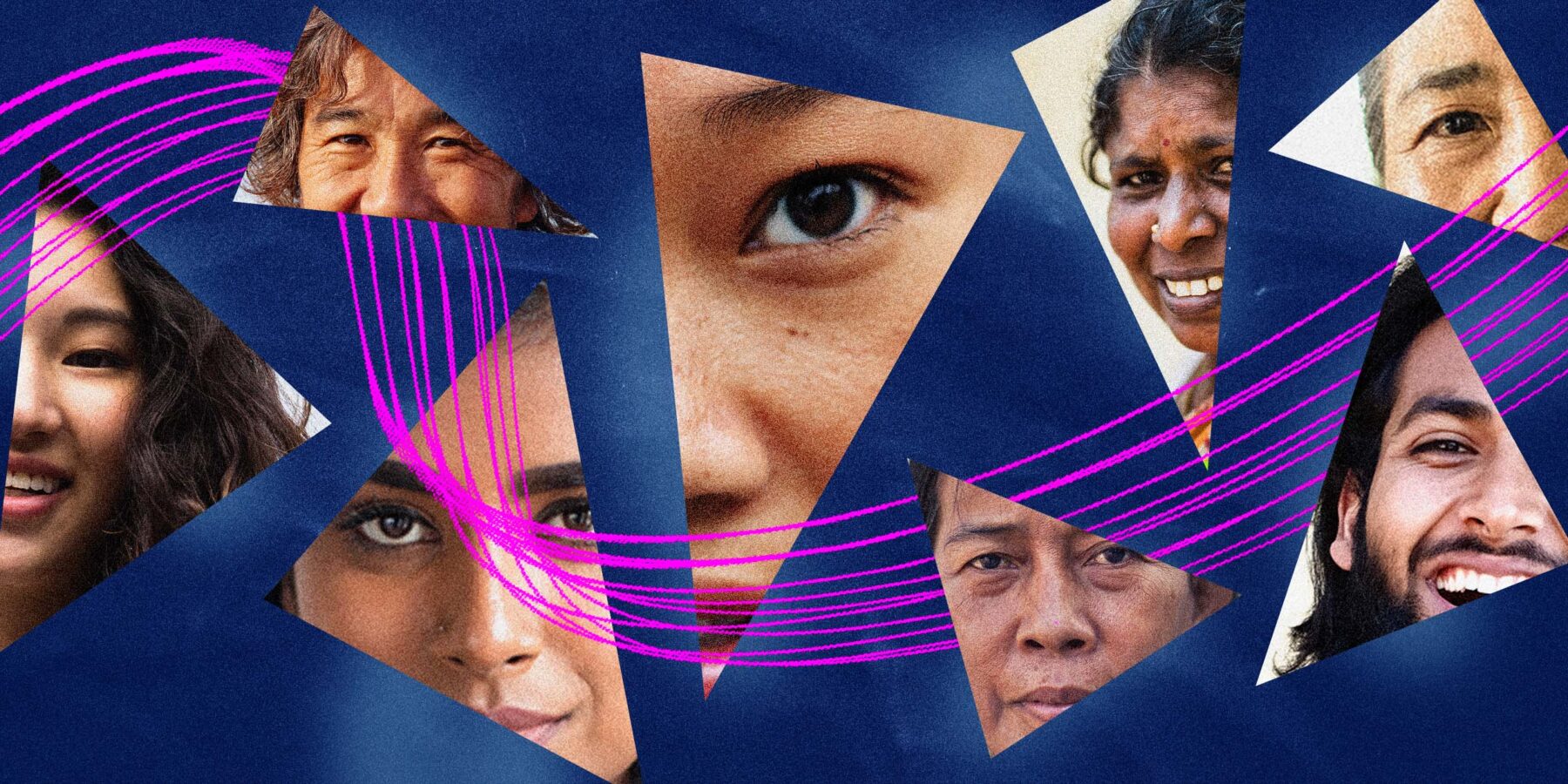
Solidarity is often a good thing. When people of Asian descent started using the term “Asian American” in the U.S. during the 1960s and ‘70s, it was a way to build a coalition of activism and political power. Asian immigrants were facing discrimination and exclusion in America; they were violently attacked and lacked representation in government. Uniting, eventually, sparked some change.
But with 22 million Asians now living in the U.S., each with different challenges, opportunities and immigration statuses, has the umbrella term “Asian American” become too broad? Is it hiding or hurting some who fall under it?
Ever since “Asian American” was added to the Census in the ‘90s, there has been a push to disaggregate, or separate out, Asian American ethnicities in data collection. Some states, including New York and California, now require disaggregation to better understand wealth, health and educational disparities. For example, overall poverty rates among Asian Americans was at 10% in 2019, but among Mongolians it was at 25%, according to Pew Research. The average household income for Indian Americans was $119,000, while for Burmese Americans it was $44,400.
Disaggregation — or, simply, specificity — is an important practice for journalists as well. “Asian American” comprises dozens of ethnicities, languages and nationalities; it’s a journalist’s job to be clear about what news event is impacting which community.
“We’re advocating for meaningful data collection and inclusive, more intentional language when we’re talking about these groups so that their stories don’t get lost under a larger umbrella,” said NBC Asian America Reporter Sakshi Venkatraman. “Because the most vulnerable members under the AAPI umbrella tend to get overshadowed because of a lack of awareness.”
In her reporting, Venkatraman recently examined the benefits and drawbacks of using the terms “Asian American” and “AAPI” and whether they are as useful as they were 60 years ago. We chatted about her work, covering such a broad beat and when using umbrella terms is a good practice. Our interview has been edited for clarity and length.
Let’s start with the basics. Why is disaggregation important?
Disaggregation can be a life-or-death issue. In Minnesota, during the pandemic, data was being collected and released under the Asian American label. But people in the Hmong American community who are Southeast Asian and have proportionally lower income said, “Wait a minute, this doesn’t seem right.” Because in their community, people were dying a lot more frequently than in other communities. It wasn’t until 2021 that an independent organization investigated and found that Hmong Americans of Minnesota comprised half of all Asian American deaths. It was an extremely disproportionate number, and the government didn’t know that, so they weren’t able to target PPE, put translators in hospitals and release information in those languages so communities knew how to protect themselves.

For Asian Americans, the urgency is about language because there’s hundreds of languages in Asia, and if you’re not looking deeper than “Asian American,” you’re not going to know what language they speak. If you aren’t giving people language access in the U.S., then you’re depriving them of life-saving services and care. It causes a lot of headaches at a minimum, and drastic consequences at worst.
For example, during Hurricane Ida, emergency weather alerts only went out in English and Spanish. Most of the people who died were lower-income Asian Americans who didn’t speak those languages.
Even with polling, elections and voting, people are being disenfranchised. If you’re not collecting and breaking down the data that you’re collecting on Asian Americans, you can’t have translators at the polls if you don’t know who’s living in the area.
Why should journalists practice disaggregation, or being specific about whom they are reporting on?
When you talk about AAPI representation, that’s constructive because it’s a problem across the entire umbrella. We don’t see enough of us in politics and media.
But if we’re doing research and speaking to people who were impacted by a situation, we will know which community is being impacted the most and be able to communicate that clearly. Using “Asian American” can often be an easy way out of having a harder, deeper conversation. For example, Sikhs have been the subject of a lot of violence recently, and it would not be useful to say “Asian American” in a situation where people are being targeted for wearing turbans.
Newsrooms in general should be hiring reporters that represent not just the mainstream definition of what an Asian American looks like, but people from minority ethnic communities across Asia and the Pacific Islands. They know which stories their communities want told.
Is it ever harmful to use the terms “AAPI” or “Asian American”? When is it necessary?
It isn’t a bad thing at all; it’s necessary. We do it in our reporting because we do cover the whole umbrella. But in headlines, it’s useful to be specific. A lot of people don’t know the difference between Asian American groups, and we should explain that in our reporting.
For reporters, think deeply when you’re writing a story about Asian Americans and about what community you are talking about. When it comes to the rise of anti-Asian hate over the last few years, it would be fair to say East Asians or people who appear East Asian suffered the brunt of hate crimes because of how they looked. Whereas with things like surveillance post- 9/11, it was South Asians or Muslim-identifying Asians that suffered the most. It can be a disservice to our communities to say Asian American or AAPI in those instances because it doesn’t give us the opportunity to target outreach or discuss why it’s happening to these people. Naming the community as specifically as possible is naming the issue.
Has there been a push to retire the terms “AAPI” or “Asian American”?
I think there is a push from the people that have been excluded from the term constantly, like when they look to the media and they see Asians, they don’t see somebody that looks like them. When they look to the data and they see the term “Asian American,” it doesn’t represent who they are.
But I see the validity in keeping the term around to build political power. Even within our own communities, we need to be looking inward and make sure that the advocacy we’re doing benefits everybody, especially the most vulnerable and least-heard members of our communities.
Ultimately, disaggregating costs more money for the government and it’s more work. And obviously, there are a lot of powerful people who are very invested in not doing that.
I don’t think that there should be a standard to completely throw out the term, because it’s still useful in many ways. People should identify where it’s helpful, and if there’s a subgroup that you’re talking about, you should be naming them.
Journalists should push to look deeper and to identify the communities that are being impacted. They should be looking at the data and talking to organizations that know what they’re doing when it comes to breaking the data down. AAPI Data, which publishes demographic statistics and policy research on Asian Americans and Pacific Islanders, is a great source. It’s always helpful for journalists to be specific in every area of reporting, but with Asian Americans it can make a difference for people to know who you’re talking about.
What are some other best practices for reporting on AAPI communities?
Research is great, but the best storytelling comes from putting people’s narratives out there and sharing their stories with the world. Not everybody is going to look at data.
If you’re going to report a story, don’t make the source do all the work. Talk to experts and advocates in Asian American communities. A small thing is to refer to “Asian American communities” because it’s not one community. It’s dozens, it’s hundreds of different communities and different people, some of whom don’t relate to each other. But there’s a common thread that links us together in some ways.
When talking to a source I’ve always asked, “How would you identify your ethnicity?” If that’s something I’m going to include in the article, people will give very specific answers. And that’s a small way that readers will be able to undo that monolithic view in their minds. It also gives the source some of their own agency when it comes to how their story is being told, especially for vulnerable groups who normally don’t get a lot of say and regularly have their stories exploited by the media.
Also, come with some knowledge. Don’t expect them to explain everything about who they are. Including a person of color in your story is not a service — they should be incorporated into every aspect of your reporting. You have to report on it with as much gravitas and intentionality as you would anything else, about what they’re facing, as a group and as a community.
More Stories From Venkatraman
Is the umbrella term ‘Asian American’ even accurate anymore?
Nearly one-third of low-income Asian women now live in states with limited abortion access
Big Tech’s big problem is also its ‘best-kept secret’: Caste discrimination
Family who froze to death crossing into U.S. on foot shows realities behind South Asian immigration



